Look Down
Inspired by Gothamist’s recent visit to the secret railway platform beneath the Waldorf Astoria, I thought it might be a good time for a bit of a follow-up to my last post.
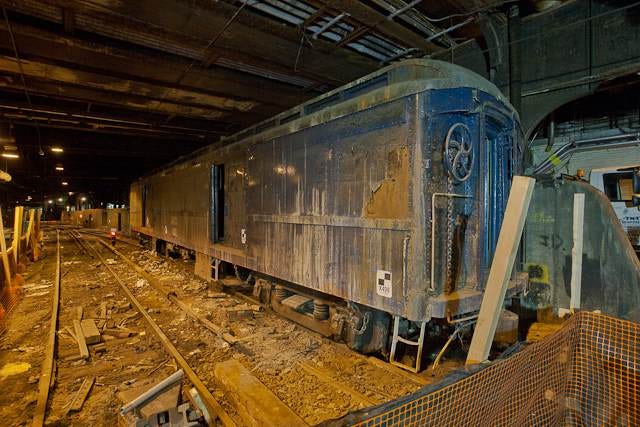
New York has always enjoyed a unique fascination with the underground. There’s a lot of infrastructure down there, and over time more and more of it has become forgotten or obsolete.

Much of the mystique of the underground is focused on New York’s subterranean transportation, naturally. (Once you spend enough time waiting in a subway tunnel, your mind inevitably begins to wander.) The explosive early growth of the subway system would probably never have occurred without private investment and competition. Before the system was unified in the 1940s, three separate companies (the IRT, BMT and IND — acronyms still in use by most grizzled New Yorkers) developed distinct networks. (Sometimes, it seems, they even built tunnels out of spite: rumor has it that the abandoned lower level of the IND’s 42nd Street station, seen below, was built only to prevent the 7 train from extending further west.)
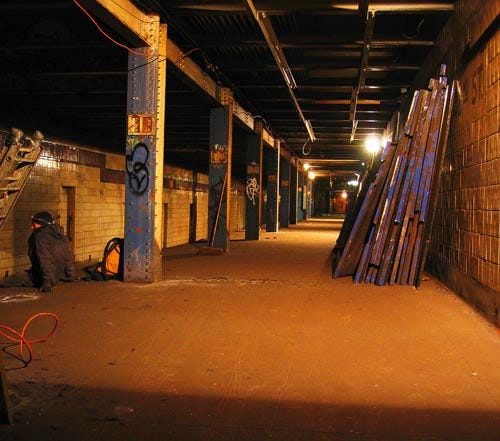
One neat thing you can do with abandoned subway stations is turn them into art! Frequent riders of the B/Q trains in Brooklyn will be familiar with Bill Brand’s Masstransiscope, a sort of inverted zoetrope installed along the northbound platform of the erstwhile Myrtle Avenue station between DeKalb Avenue and the Manhattan Bridge. With a traditional zoetrope, a user sees the illusion of motion by looking through the slits of a spinning cylinder at individual frames on the cylinder’s interior walls. With the Masstransiscope, the subway car does all the work, while the static frames are plastered on the platform walls and the slits are cut out of a wall installed at the platform’s edge. It makes for a stunning effect.
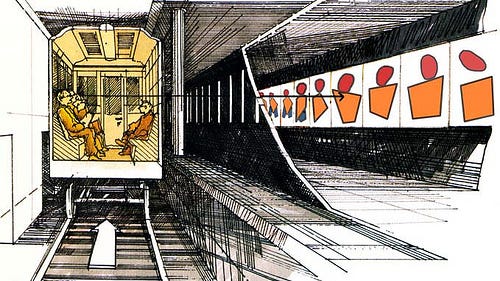
You can also turn abandoned stations into parks, apparently. A group of “urbanist entrepreneurs” is trying to develop an abandoned trolley terminal below Delancey Street into a cavernous park, which has been nicknamed the “Low Line.”
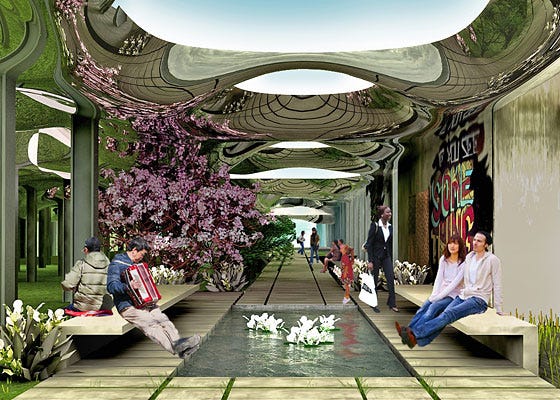
If you don’t care to wait for projects like this to come to fruition, you can always take a self-guided tour of the incredible original 1904 City Hall station by staying on the 6 train after its final downtown stop at the current Brooklyn Bridge — City Hall station:
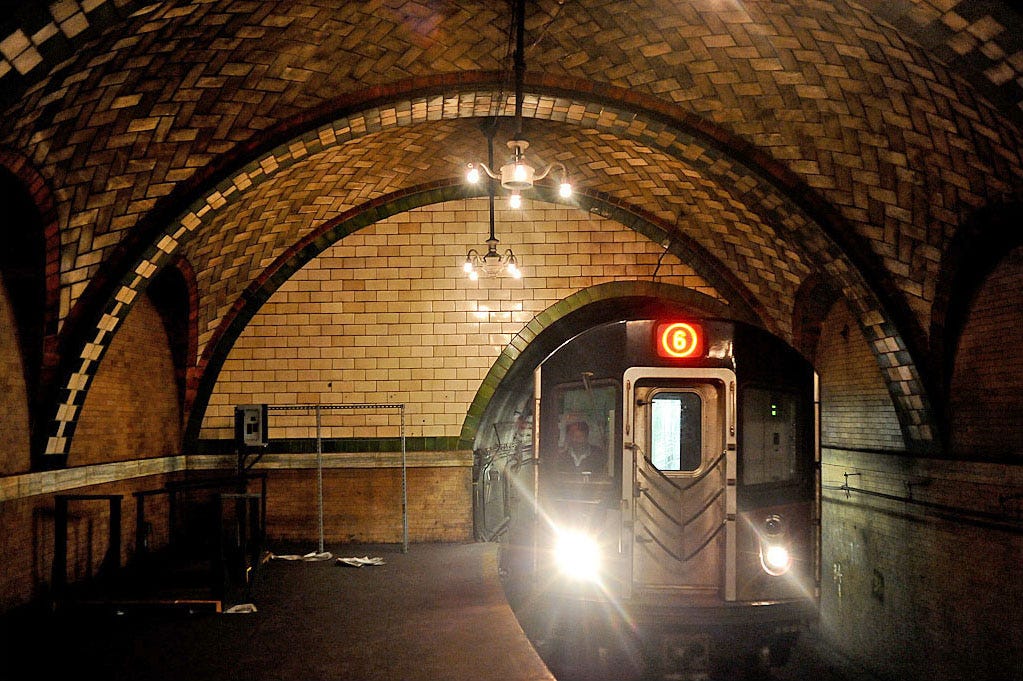
If you’d like a more in-depth look, do not miss the New York Transit Museum, which is housed in the IND’s abandoned Court Street station. It showcases vintage subway rolling stock (seen below), turnstiles, tokens, porcelain signage and more. (If you’re more into buses, check out the New York Bus Festival, which accompanies the annual Atlantic Antic every September.)
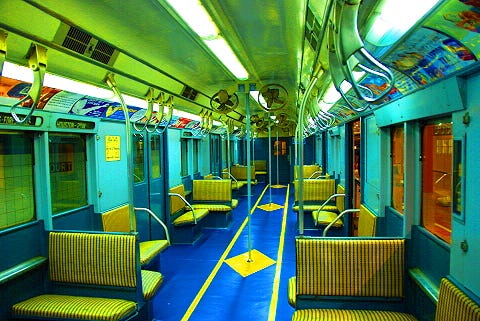
Until recently, you could join a group of railfans, pop a manhole cover and descend into the long-lost Atlantic Avenue rail tunnel, completed circa 1844 and sealed off in 1861. Long abandoned and even considered apocryphal, the tunnel was finally rediscovered by Bob Diamond in 1980. Sadly, access to the tunnel was shut down by order of the NYC DOT last year.
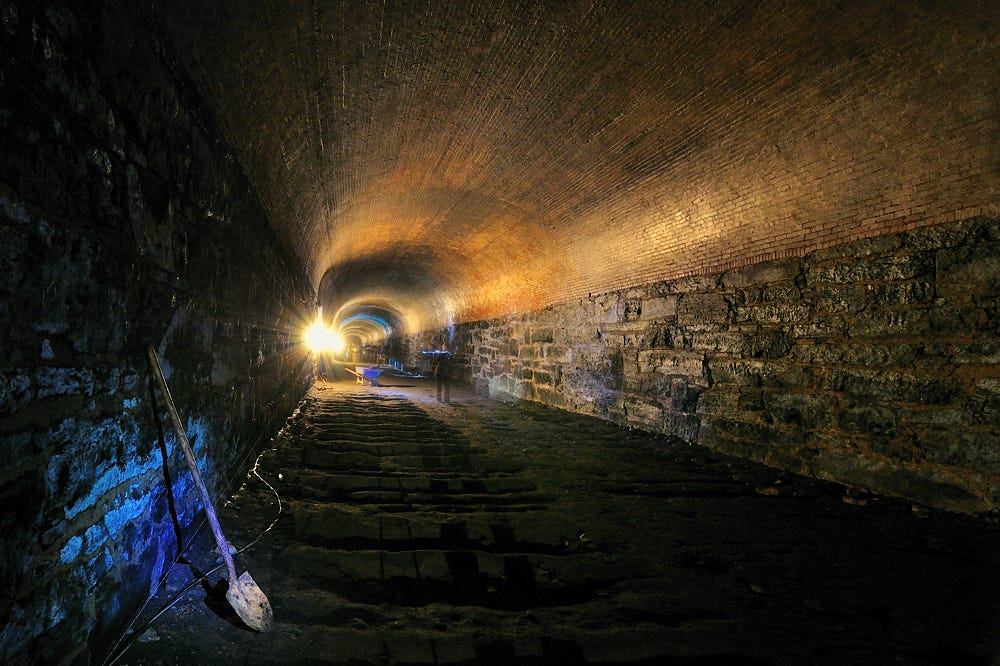
For now, if you’d like to see most of New York’s hidden delights, your best bet is to flirt with the PATRIOT Act and take advantage of some good old-fashioned late-night B&E, like Andrew Wonder and Steve Duncan did in their urban spelunking video “UNDERCITY”:

